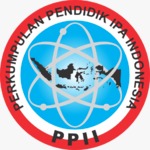Teknologi Pengeringan Makanan Tradisional Terakusisi Dengan Sensor Arduino Sebagai Alternatif Media Pembelajaran Fisika Yang Selaras Dengan Perkembangan Sistem Otomatisasi
DOI:
https://doi.org/10.29408/kpj.v8i1.24758Keywords:
Arduino, Learning Media, Food drying technologyAbstract
The use of Arduino integrated sensors for appropriate technology in food processing in West Kalimantan is still very minimal. On the other hand, the quality of food ingredients that are specially dried using conventional drying is very far from health quality standards. This problem is actually very useful for developing more contextual physics education learning media. Moreover, various materials that are currently connected to concrete thermal measurements, for example, do not use measuring instruments that can actually be used in everyday life, especially in food processing technology, so that students are not motivated in learning physics and their learning outcomes are low.The current availability of Arduino and its sensors makes it possible to produce a traditional food drying technology acquired with Arduino sensors that is in line with the physics education study program curriculum. This has not been developed comprehensively in West Kalimantan. The objectives of this research are: 1. Obtain a design for traditional food drying technology acquired with an Arduino sensor which is proven to be effective in terms of energy and drying time; 2. Obtain physics learning media which involves exploring traditional food drying technology acquired with a valid Arduino sensor. This research is included in R & D (Research and Development). This research begins with a design concept which is realized in the form of design construction drawings, the manufacturing process and testing of products that have been made, as well as the design of physics learning tools. The research results show that the traditional food drying technology acquired using an Arduino sensor as a learning medium has been successfully developed and has met the feasibility criteria in the high categoryReferences
Andreanto, E. & Suprianto, B. 2018. Pengembangan Media Pembelajaran Trainer Microcontroller Berbasis Arduino Uno dengan Menerapkan Aplikasi Sistem Radar dan RFID pada Mata Pelajaran Perekayasaan Sistem Kontrol di SMK Negeri 2 Bangkalan. Jurnal Pendidikan Teknik Elektro. 7 (2): 183-192.
Battsengel, G., Geetha, S. & Jeon, J. 2020. Analysis of Technological Trends and Technological Portfolio of Unmanned Aerial Vehicle. Journal of Open Innovation: Technology, Market, and Complexity. 6 (3): 48. https://doi.org/10.3390/joitmc6030048.
Boimau, I., Irmawanto, R., & Taneo, M. F. 2021. Rancang Bangun Alat Ukur Laju Bunyi di Udara Menggunakan Sensor Ultrasonik Berbasis Arduino. Cyclotron. 2 (2):1–7. http://dx.doi.org/10.30651/cl.v2i2.3253.
Firmansyah, J., Suhandi, A., Setiawan, A., & Permanasari, A. 2021. Level Pemahaman Konsep Fluida Mahasiswa Calon Guru Fisika dalam Project Based Laboratory (PJB-Lab). JIPFRI Jurnal Inovasi Pendidikan Fisika Dan Riset Ilmiah. 5 (2), 102–109. https://doi.org/10.30599/jipfri.v5i2.1061.
Hakim, V. A. A., Wibowo, A., & Wibowo, H. 2019. Analisa Pengembangan Drone Penyemprotan Hama Tanaman Dengan Jenis Nosel Dan Ketinggian Untuk Mengetahui Luas Semprotan. Engineering Jurnal Bidang Teknik. 10 (2): 64–69. https://doi.org/10.24905/eng.v10i2.1438.
Maison, M., Lestari, N., & Widaningtyas, A. 2020. Identifikasi Miskonsepsi Siswa pada Materi Usaha dan Energi. Jurnal Penelitian Pendidikan IPA. 6 (1): 32–39. https://doi.org/10.29303/jppipa.v6i1.314.
Marwanto, D. & Budiono, A. P. 2016. Rancang Bangun Trainer Berbasis Arduino untuk Menunjang Mata Kuliah Instrumentasi Kendali Di Universitas Negeri Surabaya. Jurnal Pendidikan Teknik Mesin JPTM UNNES. 5 (2):104-109.
Miles, M. B., Huberman, A. M., & Saldana, J. 2014. Qualitative Data Analysis A Methods Sourcebook. London: SAGE.
Purnama, D., Harpian, H., Pereira, V. V., Rusdiana, D., & Suwarma, I. R. 2022. Pengembangan Alat Praktikum Berbasis Arduino Uno Materi Kesetimbangan Benda Tegar (Momen Inersia dan Momentum Sudut). Jurnal Pendidikan Indonesia. 3 (2), 144–152. https://doi.org/10.36418/japendi.v3i2.574.
Puspasari, F., Fahrurrozi, I., Satya, T. P., Setyawan, G., Al Fauzan, M, R., Admoko, E. M. D. 2019. Sensor Ultrasonik HCSR04 Berbasis Arduino Due untuk Sistem Monitoring Ketinggian. Jurnal Fisika dan Aplikasinya. 15 (2): 36–39. http://dx.doi.org/10.12962/j24604682.v15i2.4393.
Puspitarini, Dwi; Y., Hanif, & Muhammad. 2019. Using Learning Media to Increase Learning Motivation in Elementary School. Anatolian Journal of Education. 4 (2). 53-60.
Rahayu, P. & Hariyono, E. 2019. Profil Penguasaan Konsep Siswa pada Sub Materi Gerak Jatuh Bebas dengan Menggunakan Four Tier Diagnostic Test. IPF Inovasi Pendidikan Fisika. 8 (2): 618–622. https://doi.org/10.26740/ipf.v8n2.p%25p.
Rochaeni, E. 2019. Penggunaan media pembelajaran geografi drone melalui metode demonstrasi pada materi penginderaan jauh. Metaedukasi. 1 (2): 72–78. https://doi.org/10.37058/metaedukasi.v1i2.1211.
Setiawan, F., Ardianto, H., Marausna, G. Sehono, & Jayadi, F. 2022. Aplikasi Pembelajaran Rc (Remote Control) Aeromodelling Untuk Santri Putri Pesantren Islamic Leadership School (Ils) Taruna Panatagama. Jurnal Pengabdian Masyarakat dan Inovasi. 2 (1), 256–262. https://jurnal.politap.ac.id/index.php/literasi/article/view/252.
Sitorus, J. B. & Mutiara. R. 2021. Rancang Bangun Sistem Kontrol Miniatur Jembatan Otomatis Keberadaan Kapal Yang Melebihi Batas Ketinggian Berbasis Arduino Mega. Jurnal Otomasi. 1 (1): 11–18.
Sugiyono. 2016. Metode Penelitian dan Pengembangan. Bandung: Alfabeta.
Widodo, Adi; S. & Wahyudin. 2018. Selection of Learning Media Mathematics for Junior School Students. Turkish Online Journal of Educational Technology – TOJET. 17 (1):154-160.
Downloads
Published
Issue
Section
License
Copyright (c) 2024 Kappa Journal

This work is licensed under a Creative Commons Attribution-ShareAlike 4.0 International License.
Semua tulisan pada jurnal ini menjadi tanggungjawab penuh penulis. Jurnal Kappa memberikan akses terbuka terhadap siapapun agar informasi dan temuan pada artikel tersebut bermanfaat bagi semua orang. Jurnal Kappa dapat diakses dan diunduh secara gratis, tanpa dipungut biaya, sesuai dengan lisensi creative commons yang digunakan








